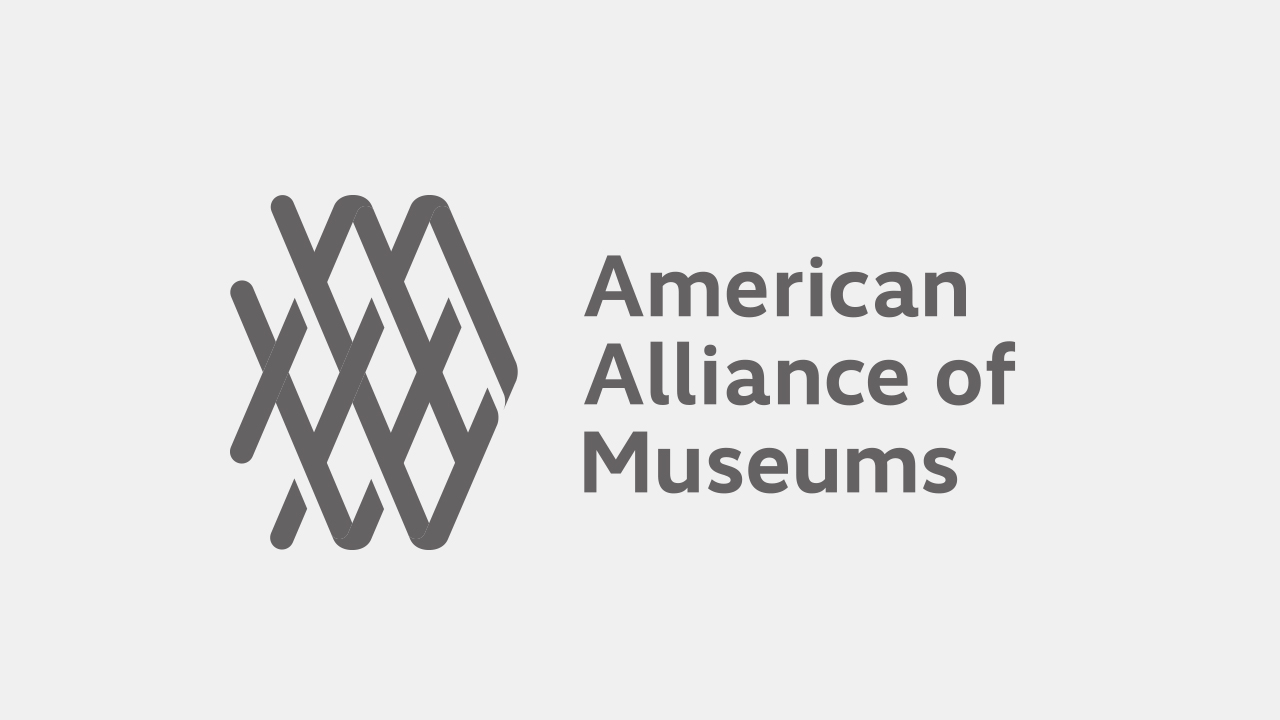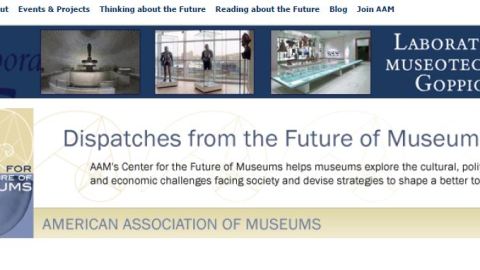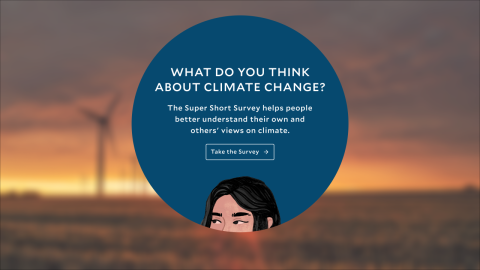
This op-ed first appeared in the journal Exhibition (Spring 2025) Vol. 44 No. 1 and is reproduced with permission.
In January 2024, revised regulations for the Native American Graves Protection and Repatriation Act (NAGPRA) went into effect that included many anticipated and long-awaited changes as well as some unexpected ones. At museums around the United States, new Duty of Care requirements caused a significant amount of debate, confusion, and action as museum staffs grappled with the change and its impact on their exhibitions.[1] Duty of Care requires museums to “[c]onsult with lineal descendants, Indian Tribes, or Native Hawaiian organizations on appropriate storage, treatment, or handling” of cultural items and to “[o]btain free, prior, and informed consent…prior to allowing any exhibition of, access to, or research” on cultural items.[2] While some museums have engaged in this type of stewardship practice for years, it was certainly not conducted methodically or consistently across and within U.S. institutions.
Hoping to remain in compliance, museum leaders began to ask questions about their galleries (even if they perhaps already knew the answers). For example:
- Are we currently displaying any known NAGPRA cultural items?
- Did we receive consent for their display?
- If not, how quickly can we address those display cases?
What followed was a public scramble during which museums quickly assessed their galleries and took action. This resulted in massive closures of displays at large institutions such as the Field Museum in Chicago, Illinois, and the American Museum of Natural History (AMNH) in New York, New York. At the Field Museum, numerous cases in the Robert R. McCormick Halls of the Ancient Americas and the Alsdorf Hall of Northwest Coast and Arctic Peoples were expediently covered with what appeared to be brown craft paper affixed with blue painters’ tape.[3] And at AMNH, all galleries of the Eastern Woodlands and Great Plains Halls were blocked to the public, with temporary partitions and guards stationed at their entrances; today, temporary walls cover the displays while providing hallways for visitors to flow through the museum.[4] At the Peabody Museum of Archaeology and Ethnology at Harvard University, where I work, we fared slightly better since we had already begun the process of reviewing all items in our galleries in an effort to remove from display any NAGPRA cultural items (i.e., a funerary object, sacred object, or object of cultural patrimony). When the revised regulations were announced, we conducted another review and added some additional items to the list to err on the side of caution. Despite our best efforts, we knew that additional cultural items would be identified in the future since museum records and curatorial knowledge are insufficient, and community knowledge is necessary for identifying NAGPRA cultural items. Through the process of consultation with Tribal Nations, we learn when there are NAGPRA cultural items on display (or any other cultural item a Tribe may not want exhibited) and our practice now includes covering the case as soon as possible and then removing those items from display after we have consulted on appropriate storage, treatment, and handling. Since January 2024, several cases in the Hall of the North American Indian and the exhibition All the World Is Here: Harvard’s Peabody Museum and the Invention of American Anthropology have been entirely emptied or covered.
Examples of closures at institutions in the nation’s largest cities made the revised NAGPRA regulations into national news. The general public were now encountering this bolstering of Tribal sovereignty and Native American rights in their news sources and in their cultural institutions. At the Peabody, our visitor services staff continue to field questions about why some objects have been removed from display and other cases have been covered. Often questions arise from genuine curiosity; in some cases, visitors express their outrage that their right to view Native American cultural items has been impinged upon. Though I find it distressing that any visitor would feel outraged by their museum experience, historically, it is Native American visitors to museums who have been outraged by the display of their ancestors and cultural items.[5] Perhaps similar to Luiseño artist James Luna’s Artifact Piece (1985–87), in which he put his own body on display in a case at the Museum of Man in San Diego thus embodying the objectification and artifactuation of Native bodies and histories in museum spaces, recently emptied display cases provide museum visitors with an opportunity to encounter their assumptions about the representation of Native Americans in museums.
One outcome of the swift museum actions that created empty cases, covered displays, and closed galleries around the country is that it gave a physical and visible presence to the extent to which American museums had disregarded the religious freedoms and cultural sensitivities of Native Americans. If this was happening in public spaces, what was happening behind the scenes at museums? Research, collections management, and conservation are all everyday museum practices that for the most part take place out of public view within museums and can have detrimental impacts to cultural items. Duty of Care directly addresses these concerns by requiring consultation regarding the care, housing, and treatment of cultural items, thereby supporting the traditional and spiritual care needs of cultural items in museum collections.
Major changes in representational and collections care practices–now required in the new regulations–had already been widely but unevenly spreading across the museum field for the past several decades.[6] For example, since the 1990s, it has been common practice at the Peabody Museum to ask Tribes about traditional care requests during repatriation consultations. In 2004, collaborative exhibition-making was a hallmark of the new exhibitions at the Smithsonian National Museum of the American Indian when it opened, and many museums have since utilized a wide range and combination of collaborative methodologies for exhibition-making, including advisory boards, exhibition co-curators, community-specific case collaborations, and Tribal consent for the display of cultural items. More recently, in 2023, the Denver Museum of Nature & Science closed its North American Indian Cultures Hall acknowledging that the hall reinforced harmful stereotypes of Indigenous people of North America and committed itself “to reimagin[ing] exhibition, curation, collecting, programming, and conservation practices with respect to Indigenous cultural histories, heritage, and belongings.”[7] These changes in museum practice reflect shifts in museum ethics toward greater respect for cultural knowledge and practice, and a foundational understanding that museum practices can have harmful impacts to the well-being of Native communities when Tribes are not included in decision-making.
Reflecting on the past year, it has been a momentous occasion for museum representation. This applies not only to the new regulations and subsequent adjustments to exhibitions, but also to the educational opportunities created for museum visitors. Not since 1990 has there been such widespread visibility to the dialogues between museums and Tribal Nations (or the lack thereof) and to the critical fact that these are dialogues with sovereign Tribal Nations. Whereas repatriation is often a process that happens privately with Tribal Nations, exhibition closures are highly visible. Both assert the sovereign rights of Tribal Nations to have control over their cultural heritage items, yet one is readily visible to the general public. One hopes that the increased visibility of case closures in response to Duty of Care will also raise an awareness about Tribal sovereignty and how museums can support Tribal Nations through their representational practices.
At the Peabody Museum, we have leaned into this educational moment by including brief explanations for the various reasons behind the removal of cultural items from display: for example, if an item was removed for collections care (i.e., a concern about fading or mount integrity), for cultural sensitivities (i.e.; we have some evidence that this item may be a NAGPRA cultural item or is sensitive for some other reason), or for repatriation/return (i.e., this item has been repatriated through NAGPRA or returned home through a process beyond NAGPRA). As mentioned previously, gallery changes were already in motion before the revised regulations as they align with the Peabody’s commitment to ethical stewardship, which we define as “sharing authority with [descendant communities and other heritage stakeholders] to implement the culturally responsive care and interpretation of collections.”[8] At the Peabody, the revised NAGPRA regulations sit within a broader framework of institutional ethics that considers the care, access, display, and interpretation of all cultural items in the museum’s care, not only NAGPRA cultural items.
In my experience, the revised regulations sparked a dialogue across the museum field, bringing theoretical conversations from conferences, articles, and museum studies courses back to the discourses of daily practice. The Duty of Care requirement provides museums with a set of foundational principles for the care of NAGPRA cultural items, thereby also requiring museums to have structures and tools for implementation. With these new foundations in place across the museum field, theoretically, all museums are now equipped with the tools to ask further questions about the care of collections beyond NAGPRA cultural items. For example:
- Should all cultural items only be displayed with consent?
- Should reproductions, replicas, and casts of sensitive items be treated the same as the cultural items themselves?
- Should museums be more cautious in providing access to cultural items even when records do not indicate status as a NAGPRA cultural item, but the critical evidence of community knowledge has not yet been consulted?
And institutions might even start asking some uncomfortable questions, which have simmered for decades, like: Should museums consult Tribal Historic Preservation Officers before purchasing contemporary Native American art? As in 1990 when NAGPRA originally passed, each museum is responsible for interpreting the guidelines and deciding whether to expand upon them in their policies and practices. Three and a half decades ago, when museums were first forced to grapple with the new regulations, they introduced new policies, experimented with new collaborative models, and put into effect new practices at varying degrees of depth and consistency across the museum field. Similarly, the new Duty of Care requirements set a new floor for museum practice, not a ceiling. There remain a multitude of stewardship responsibilities beyond the requirements of NAGPRA that museums must consider as part of their ethical responsibilities to Tribal Nations and to all Indigenous and descendant communities whose items of cultural heritage exist in museum collections.
Stephanie Mach, PhD, is a Diné (Navajo) anthropologist and is Curator of North American Collections at the Peabody Museum of Archaeology and Ethnology. As a curator, Stephanie works to address the colonial legacies of the museum in ways that support and uplift Tribal Nations and Indigenous communities. Aligned with the museum’s institutional goal of ethical stewardship, her curatorial approach acknowledges that Native communities are the experts on their own histories, cultures, and experiences. Her research engages questions around museum representation and care, and decolonizing, Indigenizing, and restorative methodologies.
[1] One common source of confusion centered around the term “cultural item” which the general public understood as all US Native American cultural items in museums; however, NAGPRA defines a cultural item subject to the law as a funerary object, sacred object, or object of cultural patrimony.
[2] See “Title 43 / Subtitle A / Part 10/ Subpart A / § 10.1,” Code of Federal Regulations: a point in time eCFR system, National Arcives, accessed April 17, 2025, https://www.ecfr.gov/current/title-43/subtitle-A/part-10/subpart-A/section-10.1.
[3] “Field Museum Alters Cultural Galleries in Response to Updated Federal Regulations,” press release, Field Museum, January 9, 2024, https://www.fieldmuseum.org/about/press/field-museum-alters-cultural-galleries-in-response-to-updated-federal-regulations.
[4] Arnaud Leparmentier, “New York’s Museum of Natural History closes its Native American collections,” Le Monde, February 18, 2024, https://www.lemonde.fr/en/culture/article/2024/02/18/new-york-s-museum-of-natural-history-closes-its-native-american-collections_6536089_30.html.
[5] Karen Coody Cooper, Spirited Encounters: American Indians Protest Museum Policies and Practices (Lanham, MD: AltaMira Press, 2008).
[6] See, Miriam Clavir, “Reflections on Changes in Museums and the Conservation of Collections from Indigenous Peoples,” Journal of American Institute for Conservation 35, no. 2 (1996): 99–107; Gillian A. Flynn and Deborah Hull-Walski, “Merging Traditional Indigenous Curation Methods with Modern Museum Standards of Care,” Museum Anthropology 25 (2001): 31–40; Christina F. Kreps, Liberating Culture: Cross-Cultural Perspectives on Museums, Curation, and Heritage Preservation (London: Routledge, 2003); and Jennifer Shannon, Our Lives: Collaboration, Native Voice, and the Making of the National Museum of the American Indian (Santa Fe, NM: School for Advanced Research, 2014).
[7] John Wenzel and Bruce Finley, “Denver Museum of Nature and Science Will Close ‘Problematic’ American Indian Cultures Hall,” TCA News Service, May 18, 2023, http://search.proquest.com.ezp-prod1.hul.harvard.edu/wire-feeds/denver-museum-nature-science-will-close/docview/2815035486/se-2.
[8] “Ethical Stewardship,” Peabody Museum of Archaeology & Ethnology, Harvard University, accessed April 11, 2025, https://peabody.harvard.edu/ethical-stewardship.






